€35.6m Project to Upgrade Osijek's Tram Infrastructure Kicks Off
21 March 2022 - The HRK 267 million project for upgrading Osijek's tram infrastructure was launched on Monday in that eastern Croatian city and the works are expected to be completed within the next two years.
Osijek Mayor Ivan Radić said that the project includes the adaptation to low-floor trams, which involves the reconstructing of 9.5 kilometres of tram tracks, the entire contact grid and 23 tram stops which will be adjusted for use by disabled persons.
A total of HRK 200 million (€27 million) will be ensured from EU funds while the remainder will be secured by the state government and Osijek City authorities. The project is aimed at increasing the number of commuters on public city transport, developing a modern and comfortable public transport means and reducing carbon dioxide emissions, Mayor Radić said.
He underscored that this is the first large investment in the city's tram infrastructure in 14 years.
The director of the Osijek City Passenger Transport company, Dejan Rusmirović explained that the project involves the reconstruction of tram tracks, the contact grid and tram stops. It envisages laying 6.5 kilometres of underground cables and the reconstruction of two rectifier stations as well as the construction of a completely new station.
Rusmirović underscored that the project also involves the construction of a new tram depot and extending tram tracks to new locations.
We are currently at the stage of preparing the necessary documents which will also be funded from EU funds and in cooperation with the state government and county and city authorities. The low-floor trams are expected to be delivered over the next three years and our project foresees 24 new trams, ten in the initial phase and then the remaining 14, added the director..
Zagreb Trams - Iconic and Integral to Life in Croatia's Capital
November 20, 2020 – Today is the 20th anniversary of the completion of the Zagreb trams network. Namely, on this day in 2000, the last current line from Jarun to Prečko was opened. To celebrate, we take a look at the iconic, blue trams of Zagreb
It's all too easy to take for granted the things you see every day. That's certainly true of city residents in their feelings for Zagreb trams. As it currently stands, the Zagreb trams network was completed on 20th November 2000, when the existing line to Jarun was further extended to Prečko, which lies to the west of the city centre. In the two decades that have followed, Zagreb trams have cemented their place as an icon of the city, have helped changed the cityscape of Zagreb and have facilitated the friendships, education, careers, relationships and businesses of the Croatian capital over millions of journeys. All without much fanfare or celebration.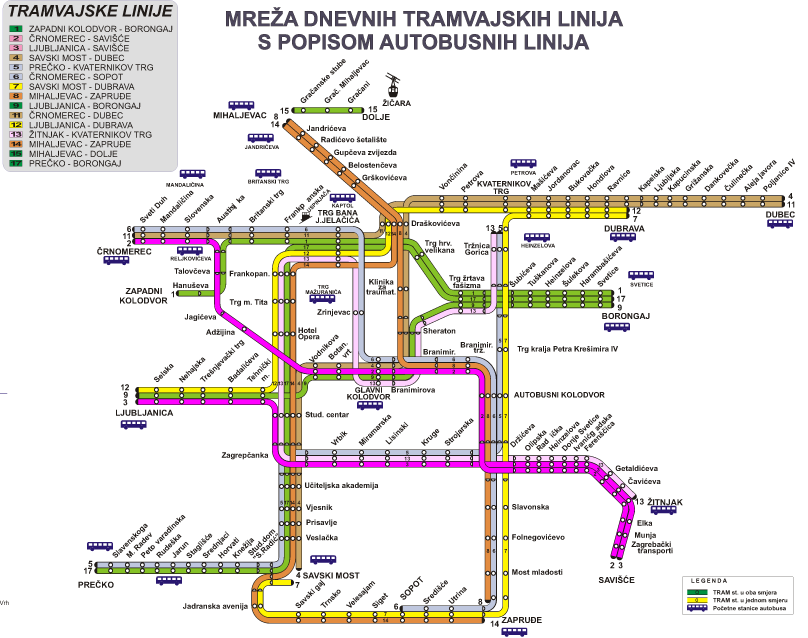 The Zagreb trams network
The Zagreb trams network
The Zagreb trams network consists of 15 lines which connect suburbs as far west from the centre as Prečko (8 kilomtres), as far east as Dubec (8 kilometres), north to Mihaljevac (3 kilometres) and south to Avenue Dubrovnik in Novi Zagreb (an additional line, running further south to Velika Gorica, servicing Zagreb Franjo Tudman airport, is planned). Throughout the night, four lines remain, connecting essential workers, night-time workers and late-night revellers (although they are sometimes replaced by night buses due to maintenance works). © Romulić & Stojčić
© Romulić & Stojčić
The completion of the line to Prečko catalysed the expansion of the westerly-lying suburbs of Špansko and Prečko. The change visited upon the rest of the city by the Zagreb trams network has been no less fundamental. Certainly, at weekends, Zagreb can confidently claim to be a 24-hour city because of its trams. Day or night, no place within the city suburbs is too far to reach because of Zagreb trams.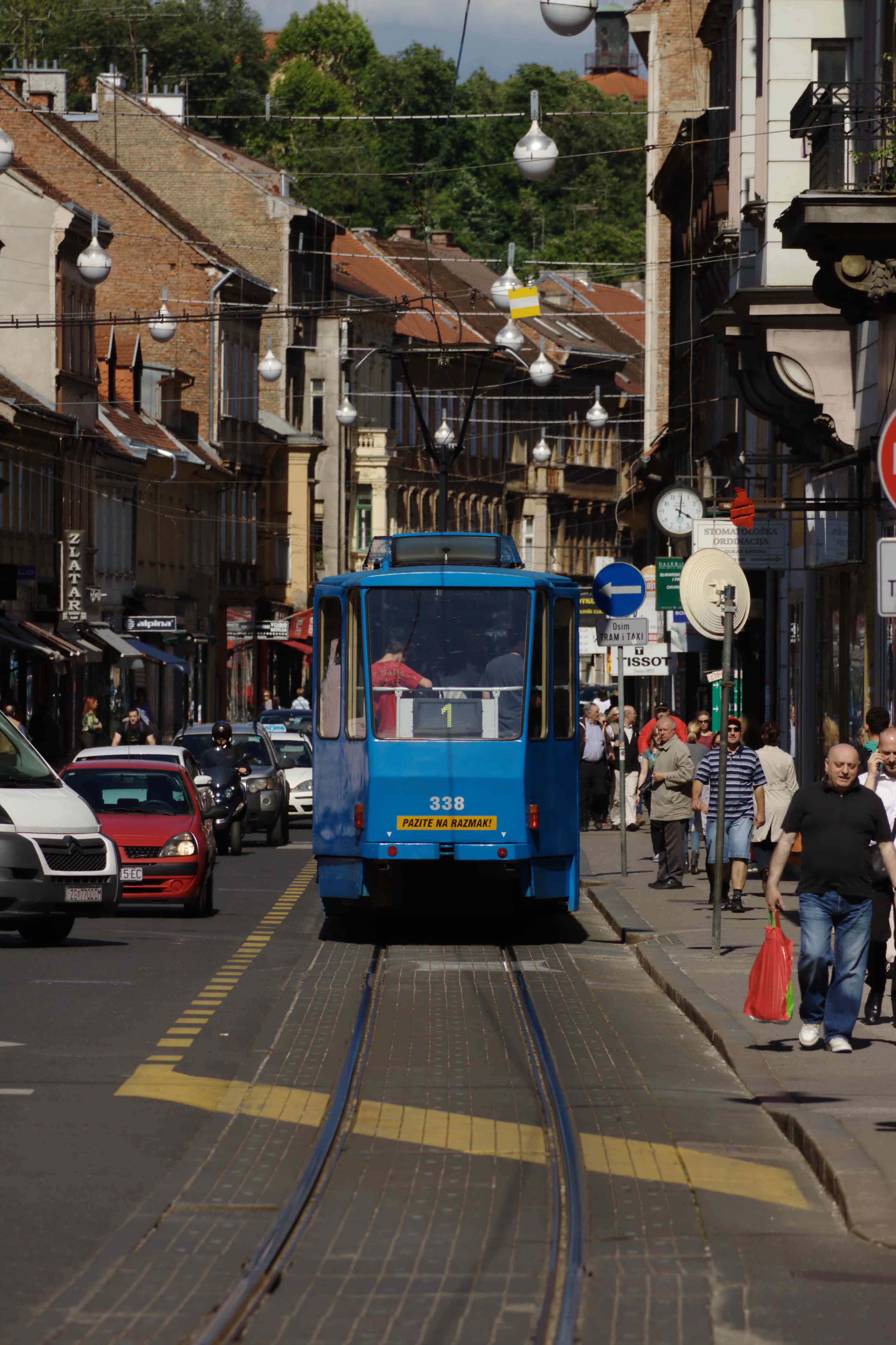 © Aktron / Wikimedia Commons
© Aktron / Wikimedia Commons
So reliable and well used are Zagreb trams that it's perhaps understandable why they are sometimes taken for granted. Whole generations now living in the city do not even know a Zagreb without a tram network. Its importance to all was put into sharp focus during the early part of 2020 when the Zagreb trams network was temporarily closed in response to the COVID-19 pandemic. Perhaps only then was the true scale of integration between Zagreb trams and the lives of city residents truly recognised. 'You don't know what you've got 'til it's gone.'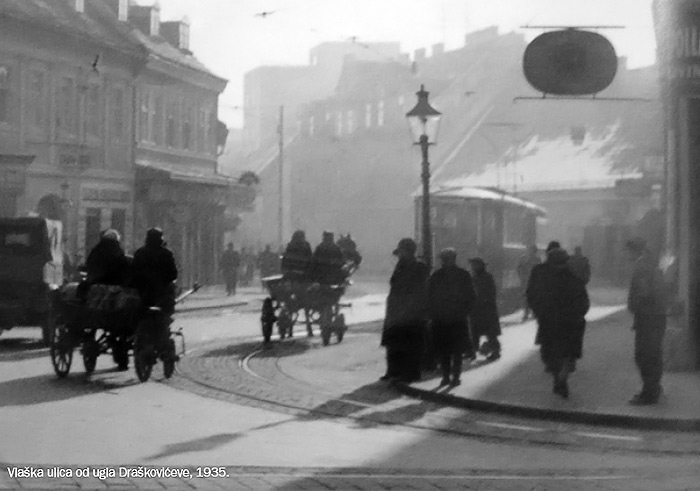 Zagreb trams on the corner of Vlaška and Draškovićeva streets in 1935 © Public domain
Zagreb trams on the corner of Vlaška and Draškovićeva streets in 1935 © Public domain
Lest we forget to give credit where credit is due, here are some interesting facts about Zagreb trams.
The Zagreb trams network was started in 1891 with the opening of the first line. Back then, the trams were pulled by horses - the electric tram didn't debut in Zagreb until 1910. The first journey started at the site of today's Technical Museum and the first track ran for some 8-kilometres. So fascinated were Zagreb residents with the introduction that some 20, 000 passenger journeys were made on the second day. The population of Zagreb at the time was 40, 000.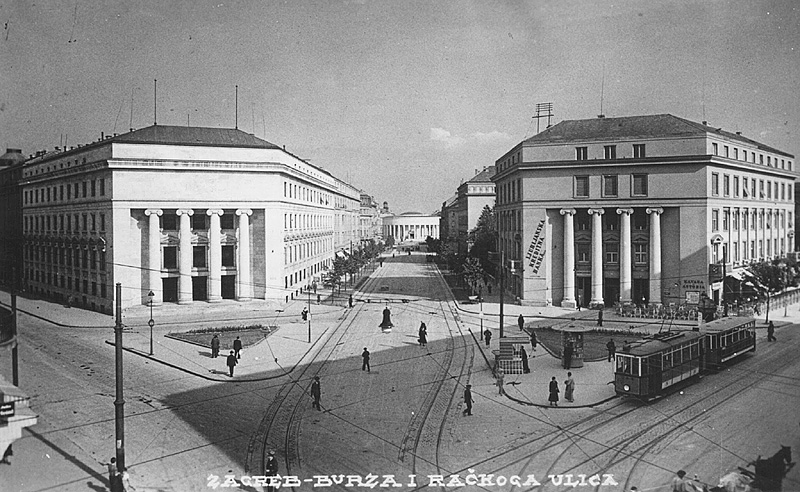 The route from Draškovićeva to Džamija in the 1930s © HappyV
The route from Draškovićeva to Džamija in the 1930s © HappyV
Osijek in Slavonia, east Croatia, was the first city in the country to have trams. The first international railway line into Croatia was built to facilitate holidays on the Kvarner coast, but the rail line ended in Rijeka. The upper echelons of Austro-Hungarian society who took this train were transported to their preferred destination – Opatija – by tram.
The most-modern low floor trams that now run in Zagreb were introduced in 2005.
There are two separate tram stations in Zagreb which have the same name – there are Heinzelova stations on the lines both to Savišće and Borongaj.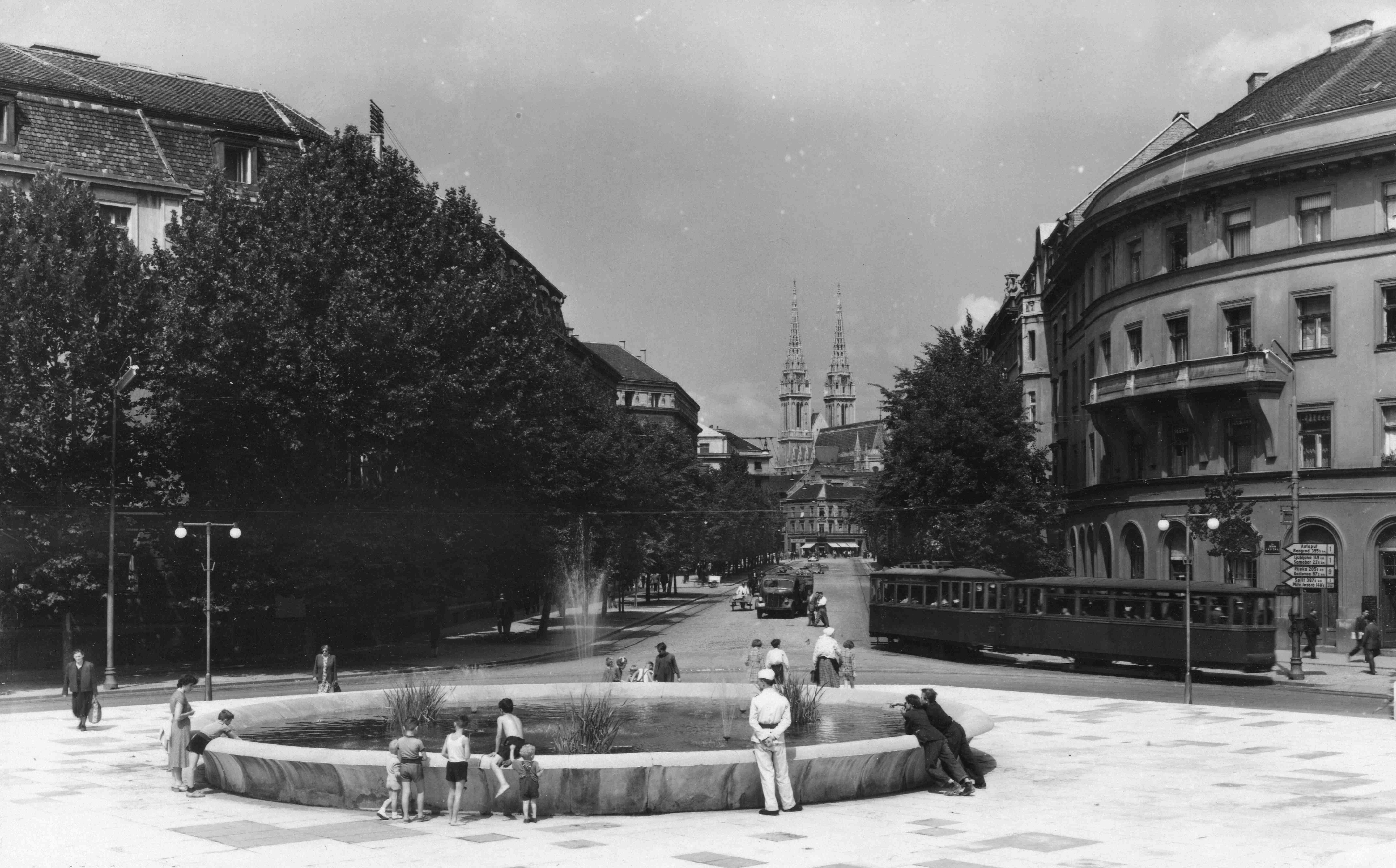 The view from Džamija up to Draškovićeva and the cathedral in 1947 © Romák Éva
The view from Džamija up to Draškovićeva and the cathedral in 1947 © Romák Éva
The Zagreb trams network has 116.3 kilometres (72.3 miles) of metre gauge track. It is the same track all over the city, except for the line which runs north to Mihaljevac, which is unique. This line is both the fastest and the shortest in the Zagreb trams network. It services some of the most desirable Zagreb suburbs in which to live. But, of course. The inclusion of the Mihaljevac line brings the track total to 120 kilometres.
Children under the age of six do not require a ticket to ride on Zagreb trams.
There are six different types of tram currently running on the network. Zagreb residents have given nicknames to different models over the years – Đuro was named after a factory that made it, Bik, meaning bull, got its name because it was stronger than older models, Čeh was named after Czechoslovakia, the country where it was produced, Katica, Genšer and Zeko meaning bunny. Everyone likes the most modern trams in summer, because they have air conditioning but, in winter, city residents greet with joy the approach of older models on their route – the seats are heated to a toasty temperature.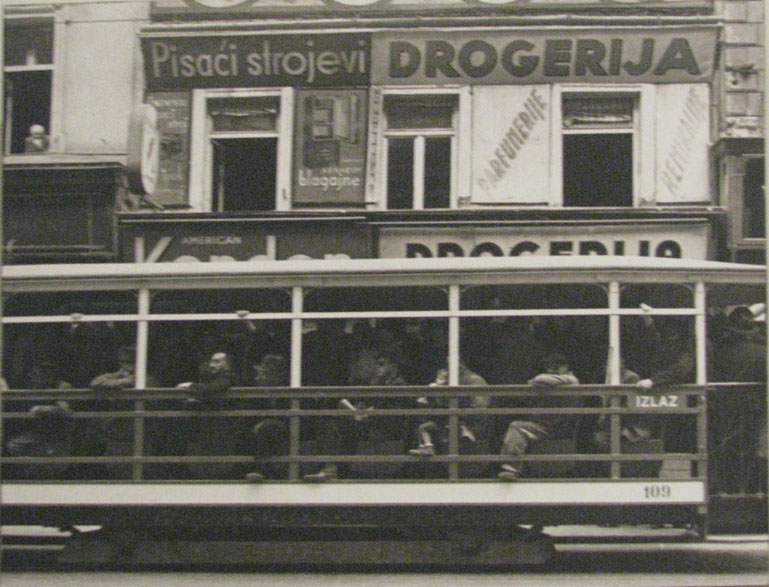 A photograph of how the open carriages of Zagreb trams used to look. The original of this photograph can be found in © Zagreb City Museum
A photograph of how the open carriages of Zagreb trams used to look. The original of this photograph can be found in © Zagreb City Museum
The longest single direction journey you can make on Zagreb trams is between Prečko in the west of the city and Dubec in the east. The journey takes around 76 minutes. You have to change tram only once to make this journey.
Apart from being the most environmentally friendly motorised public transport option in the city, the trams have massively contributed to Zagreb being a modern eco-friendly capital. Many city tram networks run down the middle of roads. While some lines in Zagreb are also placed here, many instead run at the sides of roads. This positioning – plus the way the lines sit in the road – make them problematic for cyclists. And this is partially the reason why Zagreb has 220 kilometres of dedicated cycle paths which exist not on the roads, like in other cities, but on the pavements.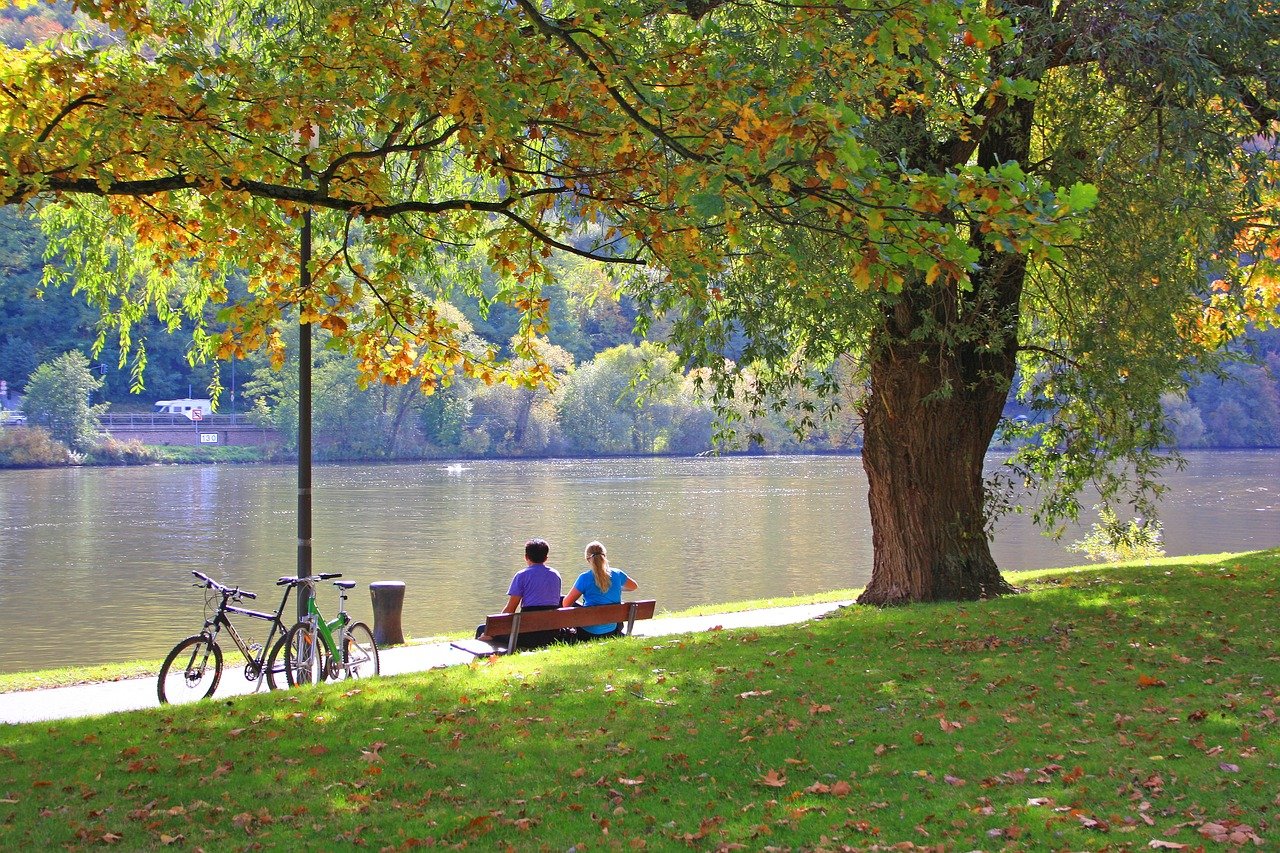 Zagreb's generous 220 kilometres of dedicated cycle paths come partially as a result of the positioning and construction materials of the Zagreb trams network © G Schneider
Zagreb's generous 220 kilometres of dedicated cycle paths come partially as a result of the positioning and construction materials of the Zagreb trams network © G Schneider
One of the world's worst tram accidents happened in 1954 on the Zagreb network. The tragedy took place on the old, steep stretch running near Mirogoj cemetery. Nineteen passengers were killed and thirty seven were severely injured.
During the day, each line runs on average every 5–10 minutes. Almost all stations on the Zagreb tram network sit on at least two lines.
Zagreb's tram network transported 204 million passengers in 2008.
A few years ago, the lowest fare tram ticket was 10 kuna. Zagreb trams were then often ridden by people without a ticket (and still are). The company who runs the tram network, ZET, decided to decrease the price of the lowest ticket to 4 kuna. Since doing so, many more people buy a ticket for Zagreb trams. You can travel for 30 minutes on any tram or trams with a 4 kuna ticket.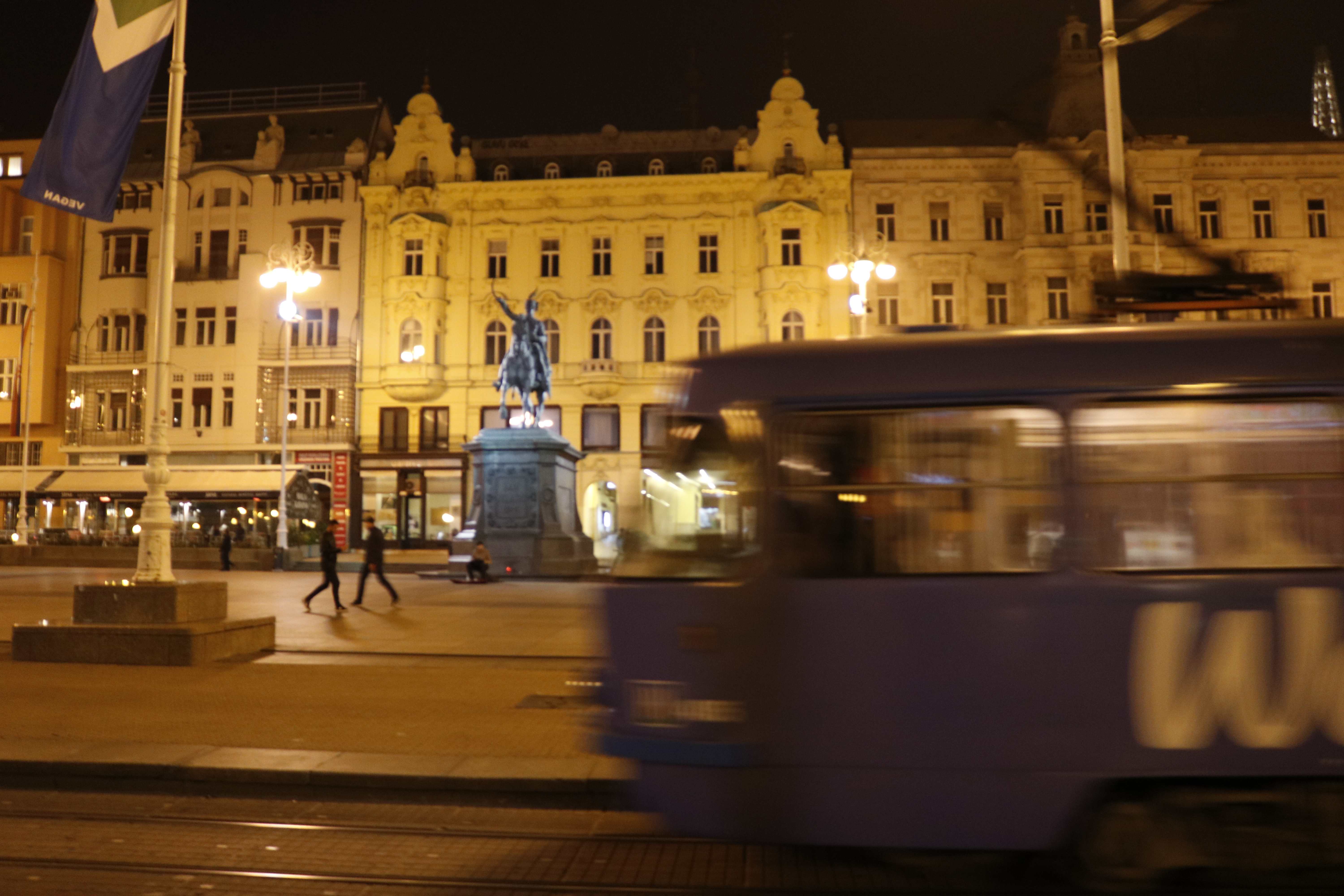 © Marc Rowlands
© Marc Rowlands
All uncredited photographs courtesy © ZET
Novi Zagreb Will Have No Trams On Sunday Morning 16 August
August 15, 2020 - Replacement bus services will be the only public transport for people travelling south of the Sava tomorrow morning
A large section of Zagreb will be without trams on Sunday morning 16 August. The whole of the tram network servicing Novi Zagreb will be closed due to the installation of electricity poles.
The disruption will affect all morning trams, with normal services in most areas resuming after midday. Replacement bus services will be the only public transport available to people travelling to and from the area south of the Sava.
During the works, tram line 14 will run from Mihaljevac only to the Sava Bridge. Also, due to additional construction works near Draškovićeva Street, tram lines 4, 9 and 13 will operate with partially changed routes on the same day.
Line 4: Sava bridge - Central station - Branimirova - Branimirova tržnica - Šubićeva - Kvaternikov trg - Dubrava – Dubec
Line 9: Ljubljanica - Savska - Frankopanska - Ban Josip Jelacic Square - Trg žrtava fašizma - Borongaj
Line 13: Žitnjak - Ulica grada Vukovara - Savska - Trg bana Josipa Jelačića - Glavni kolodvor - Branimirova - Branimirova tržnica - Šubićeva - Kvaternikov trg.
Grant Agreement Signed to Upgrade Zagreb Tram Infrastructure
ZAGREB, June 10, 2019 - A grant agreement was signed on Monday in Zagreb for the first phase of upgrading the city's tram infrastructure which will incorporate 11 tramline sections, 8,194 metres long, three control stations and the preparation of a transport feasibility study with a total value of 260 million kuna, 85% of which will be covered from the EU Cohesion Fund and 15% from the state budget.
The agreement was signed by Minister of the Maritime Affairs, Transport and Infrastructure Oleg Butković, the director-general of the city's ZET tram and public bus operator, Ljuba Žgela, and Central Finance and Contracting Agency (SAFU) director Tomislav Petrić.
Zagreb Mayor Milan Bandić, who attended the ceremony, underscored that the agreement was yet another example of good cooperation that will enable improving the quality of the city's public transport infrastructure, and announced the construction of another 60 low-floor trams.
Minister Butković said that the project of upgrading the tram infrastructure in Zagreb in addition to the procurement of new buses and the construction of the new roundabout at the southern entrance to the city, in all amount to about 430 million kuna in grants, which is confirmation that an investment cycle has launched valued at about 20 billion kuna throughout Croatia.
With today's agreement, we have reached a level of signing contracts for 85% of available funds from Operational Programme Competitiveness and Cohesion 2014 - 2020, which is about 11.5 billion kuna in grants for transport projects and 94% of the available funds for European connectivity or an amount of 15 billion kuna in grants for transport projects throughout Croatia, he added.
Žgela recalled that in 2017 the City of Zagreb had signed an agreement for the procurement of 15 new buses valued at 32 million kuna and another agreement in January this year for an additional 29 buses valued at 55 million kuna.
More Zagreb news can be found in the Lifestyle section.
ZET Changing Things Up, Removing Fifteen Kuna Tickets
Although ZET's fifteen kuna ticket that can be purchased in vehicles has hardly been a celebrated move, the four kuna ticket is still very much a hit among public transport users.
As Poslovni Dnevnik writes on the 18th of January, 2019, from the first day of next month, it will be possible to buy a new ticket at a lower price on ZET's buses and trams. Currently only the somewhat unpopular fifteen kuna ticket is currently available.
From February onwards, passengers on ZET's public buses and trams will be able to purchase tickets costing six and ten kuna, and the cheapest ones, standing at a price of four kuna, will still be available but only at kiosks, as opposed to on the vehicle itself.
"The tickets are currently being made because they will be different from those that can be bought from outside the vehicle and will have ''bought from the driver'' written on them,'' stated ZET's Anto Jelić.
He told Vecernji list that he believed that the six and ten kuna tickets would fully extinguish those currenty costing fifteen kuna, which have proved rather unpopular. As he explained, the new one that will be able to be bought for six kuna will be worth half an hour of travel, just like the one that one can currently buy outside of the tram or bus for four kuna.
In kiosks and sales points which are able to sell ZET tickets, you will be able to purchase a half an hour ticket costing four kuna, a one hour ticket of seven kuna and a one hour and thirty minute ticket of ten kuna. Tickets costing six and ten kuna will also be available for purchase in ZET's buses and trams themselves.
"This will now be a relief for both drivers and passengers, which is what we ultimately wanted," added Jelić.
Make sure to stay up to date by following our dedicated news page. If it's just the Croatian capital you're interested in, give Total Zagreb a follow.
Advent in Zagreb: Free Public Transport at Weekends
December the 5th, 2018 - Advent in Zagreb is well and truly bringing the Croatian capital into the joyous atmosphere of the festive season, and the three time winner of the best advent destination in Europe is offering what it usually does at this time of year, once again - free public transport use at weekends.
As studentski.hr writes, the City of Zagreb has provided Zagreb's residents and tourists alike with the free use of the city's public transport every weekend for the duration of Advent in Zagreb, which will last until January the 6th, 2019.
Zagreb's long standing mayor Milan Bandić confirmed for a previous HRT radio show that the capital's trams and buses operating in zone 1 will not charge for their services on weekends during the period of the current advent festivities in the Croatian capital. The move comes as no surprise and has been the norm during advent.
Nevertheless, a small change is that one of Zagreb's most popular attractions, the Zagreb funicular (Uspinjača), which will be transporting passengers to midnight, has to be paid for as normal for the entire duration of Advent in Zagreb, which has otherwise not been the case over the past few years.
To be more specific, Zagreb's public transport will be free during the period from Friday at 12:00 (midday) to Sunday at midnight. It should be noted that during this period, traffic will be prohibited in certain otherwise busy areas, those areas are Nikola Šubić Zrinski Square (Zrinjevac), Strossmayer Square, and King Tomislav Square, where only public transport vehicles may be used during the aforementioned periods.
Make sure to stay up to date with our dedicated travel and lifestyle pages for further information like this, and much more. If it's just the capital you're interested in, give Total Zagreb a follow.
Click here for the original article by Anton Smrekar for studentski.hr
Pula Riva Tram: The Answer to Istrian City's Summer Crowds?
As Glas Istre writes on the 26th of November, 2018, calculations show that almost a million people per year can be found on Pula's riva (waterfront), with the highest concentration naturally being in the tourist season, during the warmer summer months. Could the introduction of a Pula riva tram be the answer to a silent yet pressing question for the city?
These high concentrations of people are all potential users of the historic Istrian city's future tram. Rather than driving cars into the city and its roads, a tram could be a much better option. Ultimately, the benefits of such a move would be multifaceted. Pula would have the opportunity to put its abandoned resources back into proper use, namely the railway line, and solve a good part of its traffic problems in an environmentally friendly manner.
Can the introduction of an electric tram along the Pula riva significantly reduce the traffic and crowding during the summer, and eliminate the proverbial tourist suffocation on the streets of Pula? Yes, it can - claim Livio Nefat and Ivan Skol, who are completing their project on the introduction of an electric tram in Pula, by reactivating the neglected railroad tracks which already exist in the popular Istrian city.
Instead of going back into the past, the Pula riva tram project introduces us to the future, just like in the film. We imagine that it would be able to travel along the entire Pula Bay, where there is already a line from older times. To be able to take a tram to go swimming at Punta Krišto, Štinjan and Hidro on one side, or go shopping in Max City on the other. And how would it be, during the summer, to be able to sit on a tram that would take you under the tunnels below the Montezaro park all the way to the exit not far from Elektroistra? It sounds unreal, but it isn't an impossible task.
The above is the vision of the Pula locals, who have been steadily and enthusiastically engaged in the Pula riva tram idea for the last four years.
''Thousands of tourists a day, from the nearby tourist zones, from settlements, camp sites, and hotels from various places across Istria, come to the centre of Pula during the summer in their cars and on buses to see its sights, to embark on a boat tour or to go to one of the evening performances at Pula Arena. They go and park wherever they arrive in the city centre, and more and more are parking at large car parks at the entrance to the city - at Mandrač, on the outskirts of the riva in the north, on Marsovo polje, and at the former Industrokema in the southern part of the city. There are no adequate, targeted means of transport now. Walking in the summer at 35 degrees is a problem for everyone. After all, they want to be comfortable, most aren't bothered about walking, but they'd be happy to drive,'' Livio Nepat states.
According to his idea, the Pula riva tram would initially run from the car park at Mandrač, near the railway station, and then along the waterfront all the way to the Forum. If the line ended up being extended as planned, and then realised, the southern part of that same symmetrical line would see a tram take tourists and other travellers from the Forum to the future garage located at Marsovo polje, where there are other larger car parks. Therefore, the tourists would leave their vehicles in the aforementioned parking areas, at Mandrač and Marsovo polje, in order to get into the city by public transport, more specifically by electric tram. This smart solution would significantly relieve Pula's burdened roads of the overwhelming crowds during the summer, according to the authors of the planned project.
According to the business plan they have developed, the first phase of the investment is worth about five million kuna, and that could be paid off within a three year period. These calculations show that almost a million people can be found on the waterfront per year, where they then embark on ships, excursion boats, buses on the waterfront, or go to concerts and other various events held at Pula Arena. These are, as stated, all potential users of Pula's future tram.
Ultimately, the benefit of the introduction of such a tram service in Pula would be a multifaceted one. The city would put its unused and abandoned resources back into proper use, such as the railway line, and thus solve at least a good part of the traffic jams in an environmentally acceptable way, explained Ivan Skol.
As far as the second phase of the project is concerned, the proposal is to use a railroad that runs along Pula Bay as a whole. The track already exists on one side all the way to the cement factory (alternatively, the old route from back in 1904 could be restored) not so far from Muzil, Max City, the Naval cemetery and the church, and on the other side, to Punta Guc at Valellunga, where a cruise terminal is planned. So, an even greater influx of tourists who need transportation to Pula Arena, the Forum, the market etc is expected. By extending the line from the cement factory to Muzil, it could also even reach an important future tourist area, as well as a new shopping centre.
On the other hand, the railway line towards the north, from the railway station to the military airport, already exists. With the addition of the section to the civilian airport, the Pula riva tram would be able to offer an elegant transfer service for thousands of passengers from the airport to the city, as well as to the future cruise terminal.
''I've been working on this tram north-south simulator for four years now. So far, a lot has been agreed. After lengthy negotiations, (with particular emphasis and thanks to the professional staff of the traffic section of Pula and Istria) HŽ confirmed to us that it's technically possible to use two tracks that are not being used at Pula railway station. The licensed company from Zagreb, authorised to design the railway infrastructure, has been working on completing the entire design process over recent days. We got a CD from the City of Pula with all the necessary geodetic substrates of the Mandrač - Forum route for the project, for which we're especially grateful to the Administrative Department for Spatial Planning of the City of Pula,'' noted Livio Nefat.
The author's desire is to present the "Tw" Pula riva tram project to the City of Pula when all of its loose ends are tied up. It is the City itself which will decide whether or not the project will come to life. Without the green light from them, it is impossible to realise, among other important things, the availability of a funding channel through European Union money. With EU cash behind it, the whole project would be easier to kickstart and then later continue to elaborate.
The two Pula locals have said that their desire to bring this project to fruition comes from their wish to make a contribution to the community as citizens of Pula, for the citizens of Pula, and in cooperation with the City of Pula, with the help of EU funds, ITU mechanisms and other forms of financing to realise a self-sustaining entrepreneurial venture, from which everyone would benefit.
Want to find out more? Make sure to keep up to date with our lifestyle page.
Click here for the original article by Jasna Orlic for Glas Istre
Combined Public Transport Tickets For More Croatian Cities
Integrated passenger transport is more convenient for all public transport users, and will contribute to a better experience for all.
Novi Zagreb To Remain Without Trams As Of Monday
You'll be waiting a lot longer than usual for a tram in Novi Zagreb as of next week...
ZET Seeks Price Increase and Police Presence in Ticket Control
ZET's workers and vehicle drivers are once again surprised by the announced changes.


